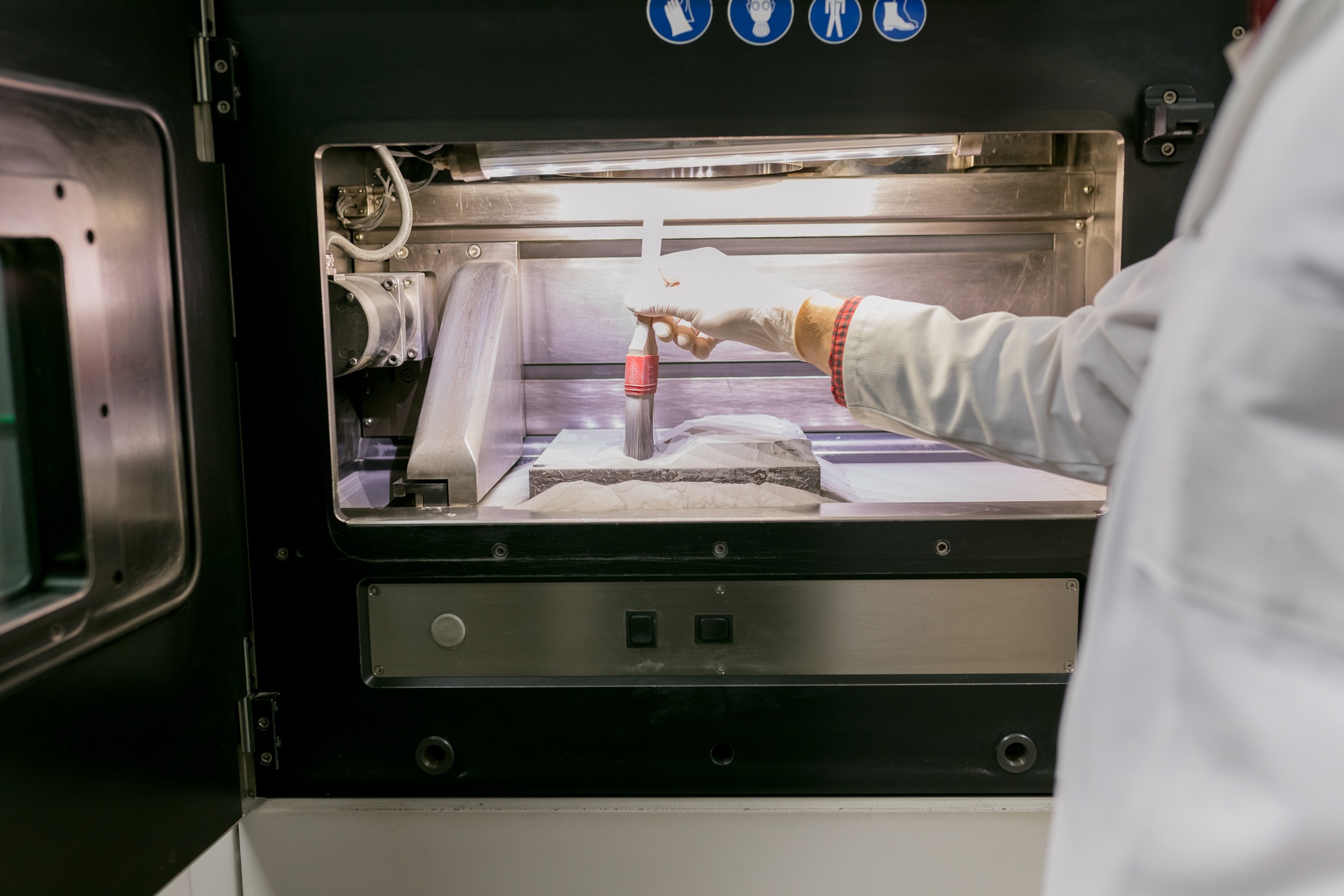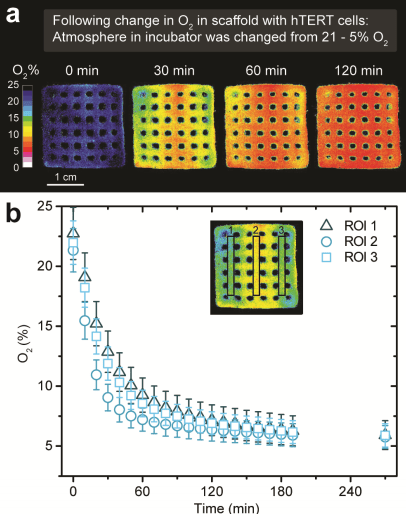
Recently published in Advanced Functional Materials, research led by Michael Kühl, of University of Copenhagen, has led to the a breakthrough in 3D bioprinting. Alongside German colleagues of the Technical University of Dresden, Kühl’s team integrated oxygen-responsive particles into a gel tissue with chemical receptors, yielding a material that can harbor living cells. This material can be used in 3D printing complex tissue and biofilm-like structures.
The team worked to develop a unique bioink that utilizes these oxygen sensitive “nanoparticles” into the 3D-printed matrix. Blue light excites these nanoparticles, emitting a red light proportional to the local oxygen concentration. More oxygen creates less red light, and vice versa. A camera system can be used to observe oxygen distribution across these bioprinted structures via red light luminescence. Ultimately, this system allows for noninvasive monitoring of oxygen dynamics that can be mapped to distribution and growth of living cells in these printed models, without having to risking damage during sampling.
“3D printing is a wide-spread-technique for producing object in plastic, metal, and other abiotic materials,” said Kühl. “Likewise, living cells can be 3D printed in biocompatible gel materials (bioinks) and such 3D bioprinting is a rapidly developing field, e.g. in biomedical studies, where stem cells are cultivated in 3D printed constructs mimicking the complex structure of tissue and bones. Such attempts lack on line monitoring of the metabolic activity of cells growing in bioprinted constructs; currently, such measurements largely rely on destructive sampling. We have developed a patent pending solution to this problem.”
 Kühl, and experienced microbial ecologist, set out to address the lack of bioprinting measurements that can quickly evaluate cell activity within these bioprinted devices. With this oxygen-sensitive gel apparatus, Kühl and his team have effectively created a means of measuring oxygen levels within these constructs. The researchers believe that this new technology can extend its benefit beyond the field of biomedicine and into areas such as biophotonics, a physics field related to photons and electricity. Kühl has voiced interest in seeking collaborations with other groups to advance this technologies’ applications.
Kühl, and experienced microbial ecologist, set out to address the lack of bioprinting measurements that can quickly evaluate cell activity within these bioprinted devices. With this oxygen-sensitive gel apparatus, Kühl and his team have effectively created a means of measuring oxygen levels within these constructs. The researchers believe that this new technology can extend its benefit beyond the field of biomedicine and into areas such as biophotonics, a physics field related to photons and electricity. Kühl has voiced interest in seeking collaborations with other groups to advance this technologies’ applications.
Kühl said, “This is a breakthrough in 3D bioprinting. It is now possible to monitor the oxygen metabolism and microenvironment of cells on line, and non-invasively in intact 3D printed living structures. A key challenge in growing stem cells in larger tissue- or bone-like structures is to ensure a sufficient oxygen supply for the cells. With our development, it is now possible to visualize the oxygen conditions in 3D bioprinted structures, which e.g. enables rapid testing and optimization of stem cell growth in differently designed constructs.”
3-D #bioprinting of living structures with built-in chemical sensors https://t.co/hMCCix7kLE #bioink #3dprinting #3dprinted #3dprinter #3dprint #HITsm #BPM #HCLDR #NHITweek #HealthSystemsChat #MGMA18 #MGMA18annual pic.twitter.com/19po7ktMwk
— Chuck Webster MD? MS AI? MS Ind. Engineering? (@wareFLO) October 2, 2018
Sources: ScienceDaily, 3D Printing Industry







 © 2025 Mashup Media, LLC, a Formedics Property. All Rights Reserved.
© 2025 Mashup Media, LLC, a Formedics Property. All Rights Reserved.